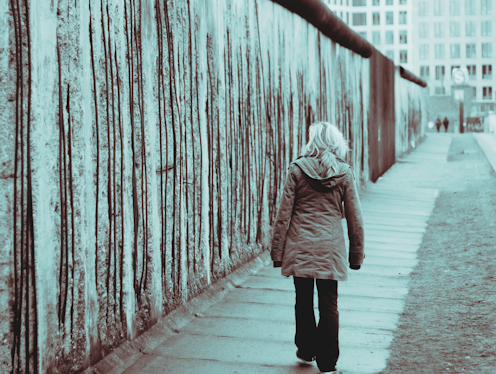identity and history intersect in Jenny Erpenbeck’s haunting new novel
- Written by Isabelle Hesse, Senior lecturer, English, University of Sydney

Jenny Erpenbeck’s new novel Kairos[1], translated by Michael Hofmann, is a story about a relationship between a young woman and an older married man, set against the backdrop of the final years of the German Democratic Republic.
But Kairos is much more than a story about an affair. It is about chance encounters and finding one’s place in a world on the cusp of disintegration.
Review: Kairos – Jenny Erpenbeck, translated by Michael Hofmann (Granta)
Its title is one of two ancient Greek words for time. Where chronos refers to linear time, kairos refers to the most propitious time for an action or argument. In rhetoric[2], it describes an ability to make “exactly the right statement at exactly the right moment”.
Erpenbeck’s novel starts with its protagonist Katharina going through two boxes of papers that belonged to Hans, her former lover. This leads Katharina to reminisce about their relationship:
Kairos, the god of fortunate moments, is supposed to have a lock of hair on his forehead, which is the only way of grasping hold of him. Because once the god has slipped past on his winged feet, the back of his head is slick and hairless, nowhere to grab hold of. Was it a fortunate moment, then, when she, just nineteen, first met Hans?
Fortune and fortunate encounters are important aspects of Kairos, as are time and timing. This applies to the timing of Katharina and Hans’s relationship, which coincides with the impending collapse of the East German republic. The novel captures the zeitgeist of the final years of the German Democratic Republic and the uncertain future facing the country and its citizens in the late 1980s.
When she was asked in an interview why she wrote about this period of East German history, Erpenbeck explained[3]:
What interested me was how something that started as a great idea, as a kind of utopian vision, how this can turn into something that feels wrong?

















